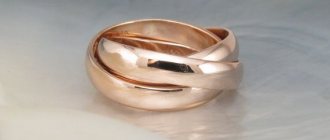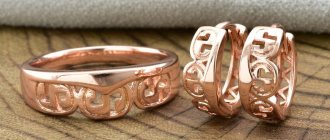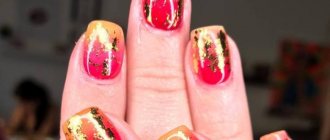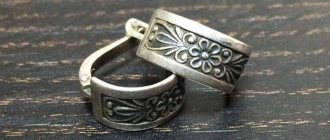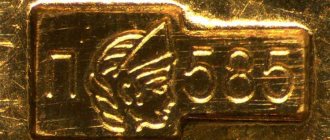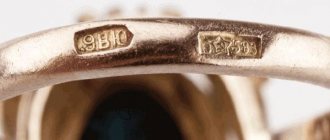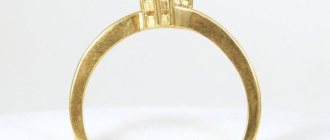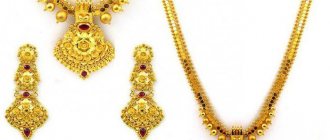Gold, in our understanding, is always associated with the color of the sun. It was for this color that it was considered equal to the daylight. The unique shine and inertness to many chemical reagents also served their purpose. All the more incredible is the mention of white, pink, green, purple and even black gold. People who are far from the jewelry business believe that all of the above are alternative precious metals. For example, white is platinum, and black is osmium. In fact, these are nothing more than misconceptions. 585 white gold contains the same number of carats of aurum as yellow gold of the same standard.
Historical reference
The opinion that white gold is a different metal did not arise out of nowhere. In the beginning, when platinum was not so well known and popular, it was actually called white gold. And they even replaced it with the real thing in jewelry and coins.
Platinum came to the Old World from America. The ancient civilizations of the Incas and Mayans have been processing the precious metal since time immemorial. Its refractoriness, inertness and high density were valued at the level of gold. However, these properties were not immediately noted. The metal was even disparagingly called “silver” (in Spanish, plata - silver) due to its color similarity to argentum.
The first deliveries of platinum were simply drowned in rivers and the ocean. The Spanish monarch issued a decree prohibiting its import into the territory of his country. Only 40 years later the new chemical substance was rehabilitated. The king's descendants began to counterfeit gold coins with his help. Platinum had a higher specific gravity than silver, and therefore the fact of falsification was not immediately discovered. The color of the new connection was revealed to the greedy rulers.
Even with 8–10% platinum alloy, the coins became white and resembled silver.
The second case in history when platinum was mistakenly called white gold happened during the development of the Ural mines. The new "Siberian metal", discovered in veins and impurities of gold ore, differed from previously known chemical elements. Having highly appreciated its properties, Russia began its production on an industrial scale. Within a couple of years, a method was invented to make platinum forgeable.
Popularity of white gold
The very first composition of white gold included platinum as a ligature. Such a connection was refractory, difficult to forge, and was not immediately noticed by jewelers. And even after the invention of new processing methods, products made from it came out massive and rough. The lack of filigree and high specific gravity were also the reasons for the lack of demand for jewelry made from this metal among buyers.
The situation began to change with the advent of elegant sets inlaid with stones. Many ordinary people have noticed that it is white gold that favorably sets off cold-glow minerals. Sapphires, rubies, and diamonds acquired additional aristocratic charm when framed in a new jewelry alloy. Even stones of medium hardness began to be perceived differently in rings and necklaces made of white metal. The minerals, transparent as a tear, showed their inimitable and unique charm in jewelry. This feature caused a lot of admiration and attracted many buyers. Sales growth was also stimulated by the increased price of platinum.
The peak of demand occurred in the 20–30s of the 20th century. The ladies flaunted their new jewelry with all their might. Showing up at a social event in sunny gold was considered bad manners. The cold stiffness, severity and versatility of white conquered continents and countries.
Price
The price of white gold, or rather jewelry made from this jewelry alloy, is influenced by many factors. First of all, this is the standard of the metal - the higher the standard, the more expensive the jewelry.
Thus, a product made from an understated 300 or 385 standard, despite its white color, is essentially costume jewelry, so the low cost of the jewelry should certainly alert you. Especially if there is no mark on it. White 585-karat jewelry is always more affordable than 750-karat jewelry, since they contain less gold.
In addition to the sample, the cost of jewelry is also affected by the complexity of its manufacture and the presence of precious stones in the product.
Another factor influencing the cost of jewelry is its weight. The price of white gold, like any other, is set per gram and is regulated by an international exchange. The average cost of 1 g of white gold (585 samples) ranges from 2100 to 3500 rubles. Therefore, the heavier the jewelry, the more expensive it will cost.
Ligatures for white gold
As the cost of the new compound increased, the circle of people who could afford to buy such jewelry narrowed. This fact did not please the jewelers at all. In addition, platinum production in Russia, the largest exporter of this metal at the time, declined due to political turmoil. A kind of collapse was brewing. Consumers wanted elegant products in their private collections, and workshops could not satisfy their demand.
The easiest way to satisfy the need of its customers for original jewelry turned out to be to replace the ligature. Instead of platinum, jewelers began to select another metal that brightens the aurum. Attempts to dilute the alloy with silver were unsuccessful. For the compound to turn white, the percentage of argentum had to be greater than half. Otherwise, the products had a yellow-green or olive color. The value of such an alloy was small, since with constant wearing, rings and earrings quickly lost their attractiveness due to the appearance of a black patina.
The next metal destined to replace platinum was nickel. Au-Ni, Au-Ag-Ni, Au-Cu-Ni alloys turned out to be strong and hard. They were suitable for making not only decorative accessories, but could also serve purely practical purposes. Brooches, cufflinks, elegant pins, and filigree rings began to be made from the new compounds. Many fashionistas of that time adorned their fingers with exquisite white gold rings. But unfortunately, despite all the positive properties of the nickel ligature, its negative impact on humans was discovered.
Approximately 10–12% of the world's population suffers from allergies to compounds whose chemical composition includes this metal. Therefore, since 2000 in Europe, nickel has been officially banned from being used in the manufacture of jewelry and costume jewelry.
Zinc and manganese are secondary brighteners, so they are used in small proportions to the main Au-Cu or Au-Ag alloys. Considering the toxicity of these metals, jewelry made from them is not recommended to be worn constantly.
What jewelry is in fashion?
Italian jewelers have been dictating the fashion for gold jewelry in Europe for many centuries, and the 21st century is no exception. Italian jewelry with precious and semi-precious stones never goes out of popularity. Italian costume jewelry is universal in that among the jewelry of masters there are things made in any style existing on earth.
Original jewelry from Gianni Versace
However, fashionable eco-trends could not ignore Italian costume jewelry. Nowadays, they are dominated by floral patterns, imitations of flowers and leaves. Precious decorations in the form of buds and miniature flower arrangements are especially popular.
The more similar the ring is to a real flower, the more stylish and elegant the gold item is considered. Such a gold ring made of white or rose gold is recognized as the most stylish gift for the bride, through which the future spouse expresses his feelings. Italians prefer to make the cores of such products from diamonds. In the manufacture of modern products in Italy, a combination of different types of gold is used:
- pink;
- white;
- yellow.
This is considered a classic in current products from Italy. The combination of emeralds, sapphires and diamonds is one of the common combinations used in floral designs.
Italian jewelry is also a game of contrasts. Gold from Italy comes in several shades. Contrasting precious and semi-precious stones used for its decoration represent an almost limitless field of activity for jewelry designers. Jewelers from Italy boldly combine precious and semi-precious stones of different textures in their products to emphasize the uniqueness of every smallest element.
Contrast of colors is one of the external distinctive features of real Italian jewelry.
Use of platinum metals
Having tried cheap analogues as alloys for white gold, chemists turned their attention to other representatives of the platinum group. Palladium became the ideal replacement. Its inertness, plasticity and high bleaching properties were positively noted by jewelers. So, to give a unique white color to the alloy, it is enough to add only 1% palladium to pure gold. In addition to the alloy of two metals Au-Pd, there are jewelry made from Au-Ag-Pd and Au-Pt-Pd compounds.
Ruthenium and rhodium also did not stand aside. Although they are not used as a ligature, they take part in the creation of white gold. Jewelry acquires a beautiful silver color by spraying. A thin layer of platinum metal is applied to the finished product using the galvanic method. During use, the jewelry wears out and after a while the base metal begins to show through the coating. In this case, it is recommended to renew the surface layer in a jewelry workshop.
The bright shine of rhodium-plated jewelry immediately attracts the attention of buyers. Sometimes unscrupulous jewelers take advantage of this by electroplating low-grade gold or silver items. To avoid such situations, when purchasing, you need to pay attention to the accompanying documents and tag:
- For gold items, the seal is made in the form of a spatula, and for silver items, it is in the shape of a barrel;
- Silver jewelry has a standard of at least 925, gold jewelry is marked with 585, 750 or 800 standard.
Even if the jewelry itself was made abroad, when undergoing certification in Russia, they are required to be sealed.
Advantages and features of white metal
In jewelry stores of the 21st century you can find gold of various shades, but not all of these alloys are considered noble. The base of each is pure aurum, named by the Romans after the goddess Aurora because of the pinkish-yellow hue that sparkles in the sun. Features of color, strength and visual appeal, which subsequently affect the price, depend on the alloy - additional metals and chemical elements that create a unique alloy. Jewelry and any products gain strength in shape and do not lose their shine and color, thanks to materials such as:
- copper and silver;
- palladium and nickel;
- zinc and platinum.
The sample is an indicator of the composition and a kind of proof of its authenticity and the right to be highly valued. In fact, the sample number indicates the number of grams of pure aurum per 1 kilogram of ligature. The higher the number, the higher the price, but also the lower the strength. Therefore, it is important to know the best ratio of composition elements, which affects not only the durability, but also the appearance of the products.
Two types - two prices
Unlike its yellow counterpart, which has a red tint due to the admixture of copper, 14k white gold is made with the addition of metals of exceptionally light, steely tones, for example, platinum and silver in the most expensive version. Based on the marking number, we can conclude that the classic composition of 585 white gold contains:
- minimum 585 grams of aurum;
- 190−210 grams of silver;
- 200−220 grams of platinum, cadmium or nickel.
The ligature has a direct impact on the price of 1 gram of the product. The range of prices for white gold is quite wide precisely because of the difference in alloy elements. If nickel is present in the composition, then the price of the jewelry will be affordable.
It is important to know that nickel is a highly allergenic metal, prohibited for use in many European countries, so if a person has allergies, you should definitely check the composition of the product when purchasing. The main advantages of such raw materials with the addition of nickel are significant:
- low price;
- exceptional strength;
- ease of polishing;
- shiny surface.
The main disadvantage is the presence of a yellow tint , since nickel is unable to thoroughly whiten yellow gold. This can be solved by applying rhodium plating to rings, earrings and chains, which gives them additional strength and the ability to choose the nuances of the decor - matte or shiny. On the other hand, after five years you will have to renew this coating in a jewelry workshop. It will be important for allergy sufferers to know that rhodium coating will protect them from dermatitis.
Luxury Platinum
From an alloy with the addition of 585 platinum, jewelers make luxury jewelry, usually to order, since the platinum or palladium in the alloy significantly exceeds the cost of the gold itself. However, the price will largely depend on the proportion of elements added. Therefore, the stores have a fairly large selection to suit every budget.
In addition to the obvious strength, the incredible beauty of the shade of perfect whiteness is added to the advantages of the platinum alloy, which makes this metal a unique raw material for:
- any type of jewelry, especially in combination or contrast with other shades of gold;
- settings of precious stones, matching perfectly with diamonds and emphasizing the depth of all the colors of the rainbow;
- exclusive writing pens and cufflinks;
- glasses frames that are bright, durable and contrast with colored glasses.
The ability to hold firmly makes platinum and palladium an ideal alloy for gemstone inlay, even on the curves and spirals of earrings or the thin temples of eyeglasses. The cost of 1 gram starts from the range of 4-5 thousand rubles and can reach 10 thousand, depending on the complexity of the work and the composition of the material. Prices for the raw materials themselves are lower and start from 1500-2000 rubles per 1 gram.
Officially recognized chemical compositions of white gold
The interstate standard, described in GOST 6835–2002, clearly defines the proportions of officially accepted compounds of gold with other metals. There are only 37 of them. The table below shows only white gold compositions:
| Try | Gold, % | Platinum, % | Palladium, % | Nickel, % | Impurities, no more than % |
| 950 | 94,5–95,5 | — | — | Ost | 0,11 |
| 930 | 92,6–93,4 | 6,6–7,4 | — | — | 0,11 |
| 900 | 89,6–90,4 | 9,6–10,4 | — | — | 0,11 |
| 840 | 83,5–84,5 | — | 15,5–16,5 | — | 0,13 |
| 800 | 79,5–80,5 | — | 19,5–20,5 | — | 0,13 |
| 600 | 59,5–60,5 | — | 39,5–40,5 | — | 0,13 |
| 600 | 59,4–60,6 | 9,5–10,5 | 29,5–30,5 | — | 0,18 |
This classification is followed by 10 countries of the post-Soviet space:
- Armenia
- Belarus
- Kazakhstan
- Kyrgyzstan
- Moldova
- Russia
- Tajikistan
- Turkmenistan
- Uzbekistan
- Ukraine
Chemical compositions of white gold not included in the standard
Our fellow citizens purchase some of their jewelry abroad. In other countries, they adhere to different proportions when creating jewelry. As a result, the noble metal does not lose its properties. But owners may have difficulty selling such jewelry or obtaining a loan for them at a pawnshop. Below are the most common chemical compositions of white gold.
| Try | Gold, % | Silver, % | Palladium, % | Copper, % | Nickel, % | Zinc, % |
| 583 | 58,3 | 23,7 | 18,0 | — | — | — |
| 583 | 58,3 | — | — | 23,5 | 12,2 | 6,0 |
| 750 | 75 | 5 | — | — | 20 | — |
| 585 | 58,5 | 25,5 | — | — | 16,5 | — |
| 750 | 75 | 5 | 20 | — | — | — |
What is the difference between the karats of white and yellow gold?
The most common question people ask is how comparable are the karats of white gold to the karats of yellow gold?
The answer is that they are completely the same. The only difference between them is the use of additional metals that are part of the alloy.
Additional metals used are palladium, manganese and zinc.
The resulting alloy may have a yellowish tint, the intensity of which will depend on how much white metal is added; after all, a significant portion of the material is yellow gold.
To remove this yellowish tint, many jewelers plate their jewelry with rhodium. The resulting jewelry is more like platinum, only much more affordable.
White gold alloy has more zinc, while yellow gold alloy has more nickel. Regardless of the presence of various metals, the purity of the alloy remains unchanged.
For example, if a gold ring is labeled 18 carat, it means that it is made up of 24 parts, of which 18 parts are pure gold and the rest are other substances. The difference between a white and yellow 18-karat gold ring is only the presence of various additives.
Determination of metal sample
The owner of gold items made of yellow metal is accustomed to trusting his eyesight and often determines the sample “by eye”. White gold jewelry does not allow this to be done upon external inspection. In jewelry workshops and pawn shops, for such cases they use a special reagent - “chlorine gold”. A small drop on a fresh cut will tell an experienced appraiser the chemical composition of the alloy.
| Initial color of the product | Chlorine gold stain color | Tested metal |
| White | Dark green | High sterling silver |
| White | Yellow, gas is released, gradually turns black | Aluminum |
| White | Black | Tin |
| Grayish white | No changes | Platinum |
| Grey | Dirty yellow | Lead |
| White | Beige, gold or orange | White gold 583, 585, 750 |
| White | Brown | Gold below 500 standard |
| White | Dark brown or black | Fake |
Which is better: white or yellow gold?
What color gold is more expensive is a common question. The buyer must understand that the cost of the ring, necklace, or chain he likes depends only on the amount of Au in the working material, that is, on the sample. True, this rule does not apply to exclusive jewelry containing platinum, since they cost many times more.
According to jewelers, women and men more often purchase jewelry in classic lemon colors, because they harmoniously fit into business style and are worn every day to the office and to special events. Sunny shades are universal; they go well with precious stones of any size or cut shape.
The demand for earrings and rings in noble light colors is growing; they are more often purchased for special occasions and special occasions. Precious metal of white shades looks expensive in combination with diamonds and sapphires. Inserts made of precious stones look stylish, modern, and noble: pink, purple amethyst, blue aquamarine , iridescent labradorite.
